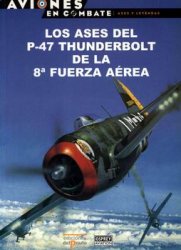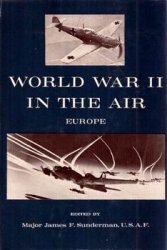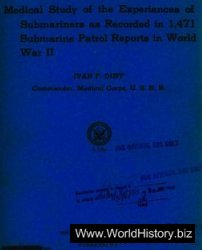SVERDLOVSK 2ND AIR ENTERPRISE (SVERDLOVSK AVI-APREDPRIAT): Sputnikov Str 6, Uktus Airport, Ekaterinburg, Urals Zone ATD, 620025, Russia; Phone 7 (3432) 242 367; Fax 7 (3432) 246 107; Code UKU; Year Founded 1992. The former Aeroflot Soviet Airlines 2nd division at Koltsovo Airport at Ekaterinburg is reformed in 1992; however, its mission of providing long-haul trunk and charter passenger services is continued. Sergey N. Shuratov is named director general and he launches services with 6 Tupolev Tu-154Ms and 3 Antonov An-12s.
Flights continue in 1993-1999, during which years Niklolai Mekhnev becomes general manager. The Russian currency crisis has a dramatic impact upon the carrier, which now changes its mission to one of domestic feeder service and rotary-wing contract aerial work. The fleet is altered by removing the Tupolevs and An-12s in favor of 2 An-28s and 19 An-2s, plus 19 Mil Mi 8/17s and 14 Mi-2 helicopters.
Airline employment stands at 400 at the beginning of 2000. The fixed-wing fleet is once again revised as two Yakovlev Yak-40s are added.
SVG AIR, LTD.: St. Vincent and the Grenadines (1991-1999). Former Mustique Airways, Ltd. pilot Martin Barnard establishes SVG (St. Vincent and the Grenadines) Air at Bequia, in the northern Caribbean Island chain of the Grenadines, in 1991. His daughters, Joanne and Leslie, take charge of the reservations and administrative offices, while one son-in-law, Capt. Paul Gravel, is named head of operations and the other, Capt. Dominic Gonsalves, becomes the no. 2 pilot. Revenue flights to nearby islands commence with a single Pilatus-Britten-Norman PBN-2 Islander and a Beech B-58 Baron.
During the next three years, the Barnard family provides charters to St. Vincent and up to Barbados. Their company enters into an agreement with Air Martinique, S. A. to complement the French airline’s Dornier 228-200 services to its St. Vincent hub. The fleet is increased by the addition of two Cessna 402Cs and a Piper PA-34 Seneca.
In late 1994, groundbreaking ceremonies are held for a new hangar maintenance center at Bequia. The new facility is constructed during the summer of 1995. Service continues apace in 1996-1998. During these years, a variety of holiday opportunities are offered, including special package tours for events on Mustique, Bequia, and Jamaica and as far as Venezuela or Guyana. The fleet includes several Aero Commander 500Ss, Cessna 402Bs, and Islanders.
On November 14, 1999, Airlines of Carriacou, Ltd. is merged with SVG Air, Ltd., with the latter owning 75% shareholding. Under the direction of SVG’s founder, Barnard, the new Vincent and Granada Air, Ltd. resumes services from Granada almost immediately.
SWAZI AIR, LTD. (2): Swaziland (1965-1978). The second Swazi Air is set up at Matsapa in 1965 as a subsidiary of National Airways Corporation (Pty.), Ltd. M. J. F. E. “Dem” Tanguy-Desmarais is appointed general manager and he is provided with a tiny fleet comprising 1 each Mooney Super 21, Navion Rangemaster, and Piper PA-23 Apache.
Revenue flights commence on September 27 with twice-weekly return flights from Matsapa to Johannesburg and to Durban.
On March 25, 1966, the company joins with DETA (Divisao de Ex-ploracao des Transports Aereos, S. A.) to open a joint Friday and Monday return service from Manzini to Lourenco Marques in Mozambique. Swazi operates the route with an Aero Commander 500B.
Flights continue during the remainder of the decade and the fleet is upgraded with the addition of a pair of Douglas DC-3s.
National Airways Corporation is taken over by Protea Airways (Pty.), Ltd. in 1970, which keeps its new subsidiary only briefly before selling it to the government of Swaziland. When A. Wilhelmi becomes the new general manager in 1972, his fleet comprises 2 DC-3s, 2 Beech Bonanzas, 1 Aero Commander 500B, and 1 Piper PA-24 Comanche.
Service continues as before in 1973-1975. During the latter year, a pooled service is operated with South African Airways (Pty.), Ltd. over the route from Manzini to Johannesburg. By 1976, the company is employing a Hawker Siddeley HS 748 over the new route thrice weekly. The two airlines also fly from Manzini to Durban twice weekly.
Late in 1977, the company stops operations and is replaced on January 1, 1978 by Royal Swazi National Airways Corporation (Pty.), Ltd. as new national carrier.
SWAZILAND AIRLINK, LTD.: SA Airlink (Pty.), Ltd., P. O. Box 7529, Bonaero Park, Johannesburg, Gauteng, 1622, South Africa; Phone 27 (11) 395 3333; Http://www. saairlink. co. za/airlink_swa; Code ZC; Year Founded 1999. SA Airlink (Pty.), Ltd. purchases 40% of the available equity in Royal Swazi Airways Corporation, Ltd. on January 25, 1999. Majority ownership (60%) remains with the Swaziland government. Under the leadership of General Manager Capt. President Dhlamini, the concern is renamed on April 12.
Outfitted with a single Fokker F.28-3000, the reborn concern launches daily roundtrip revenue services on July 1, linking Manzini (Matsapa) with Dar es Salaam and Johannesburg. During the fall, flights to Dar es Salaam cease and frequencies between Manzini and Johannesburg are increased to three per weekday and once on Saturdays.
Airline employment stands at 37 at the beginning of 2000. Early in January, the F.28-3000 is grounded for repairs after it develops cracks in its windshield frame. Another aircraft is leased for the interim. The repaired Fokker returns to service in May just in time to offer a special flight, transporting King Mswati III to Mauritius. After developing a mechanical fault over the Indian Ocean, the aircraft is forced to abort the service and return to Mbabane. It is parked there at Matsapha International Airport while government and airline officials decide what to do with it.
After the incident with the king, it is decided not to bring the jetliner back into airline service; instead, it is replaced with a British Aerospace BAe Jetstream 41, chartered from SA Airlink (Pty.), Ltd. When the J-41 enters service on June 18, it wears Swaziland Airlink livery.
Services are enhanced during the summer and fall, with the number of weekly roundtrips from Johannesburg to Matsapha boosted to 26 (4 on weekdays and 2 on Saturdays). An average of 4,000 passengers are flown every month.
In October, Swazi transport ministry officials announce that the carrier will either sell or lease out the displaced F.28-3000, which remains grounded at Mbabane.
SWEDAIR, A. B.: Sweden (1975-1993): This regional is formed in 1975 by the merger of Crownair, A. B. and Svensk Flygtjanst, A. B.,
Founded in 1935 and one of the nation’s oldest carriers. The Swedish government holds 50% interest with the other half divided between Lin-jeflyg, A. B. and ABA Swedish Airlines, A. B., the SAS (Scandinavian Airlines System) consortium partner. A fleet is assembled and personnel hired during the remainder of the year.
In 1976, de Havilland Canada DHC-6-100 services are launched over a Karlstad-Goteborg route. In 1977, the carrier’s shareholding is revised; ABA Swedish Airlines, A. B. takes 25% and Linjeflyg, A. B. the remainder. The airline now inaugurates regional services on behalf of Linjeflyg, A. B. and SAS (Scandinavian Airlines System), but is also given one international route, Orebro-Copenhagen, for itself. The charter subsidiary Basair, A. B. is formed in 1979.
Ministry of Finance official Karl-Erik Strand becomes president/CEO in 1981. Airline employment stands at 450 and the fleet comprises 1 Douglas DC-3, 1 DHC-6-100, 9 Cessna 404 Titans, 1 Cessna 402, 1 Cessna 441, 1 Cessna 425, 1 Cessna 337, 9 Mitsubishi Mu-2s, 1 Gates Learjet 36, 2 Learjet 35As, and 2 Learjet 24s.
In 1982, orders are placed for 10 SAAB-Fairchild SF340As and 6 DHC-6-200s. The first of the Swedish-manufactured turboprops is delivered in 1983, during which year a total of 466,720 travelers are carried. Two additional SF340As arrive in 1984 as the network reaches 20 destinations in Sweden and Denmark. Passenger boardings pass the half-million mark.
Three more SF340As arrive in 1985 and join a fleet comprising 3 SF340As, 5 Fairchild Hiller FH-227s, 6 DHC-6-200s, and 1 British Aerospace BAe Jetstream 31. The year’s profit reaches $2 million. The last 4 SF340As are delivered to the 600-employee regional in the late summer of 1986, at which time sale of the Twin Otters begins.
Regional services are continued in 1987 and President Strand’s fleet has been altered to comprise 2 Jetstream 31s, 2 Cessna 441s, 4 Cessna 404s, 2 DHC-6-300s, 2 FH-227s, 3 Learjet 35As, and 8 340As.
Operations continue apace in 1988 and in 1989 this commuter receives a de Havilland Canada DHC-6-300 Twin Otter on lease from Lo-ganair, Ltd. and a Piper PA-31-350 Navajo Chieftain. Managing Director Eric Lindstrom’s carrier inaugurates scheduled services to Vilhelmina and Umes.
Rolf Blom steps into the managing director slot in 1990 as flights begin to Vasa. The financially weak carrier enters into merger discussions with SalAir, A. B., but the uncertainty caused by the world political situation following Iraq’s August invasion of Kuwait causes them to drag. Plans are also made for the sale of Linjeflyg, A. B.’s 75% interest in the regional if a merger between it and Salair, A. B. is concluded. Enplane-ments total 444,400.
The fleet in 1991 includes the DHC-6-300 leased from Loganair,
Ltd., plus five owned and eight chartered SAAB 340As. Orders are outstanding for three SAAB 2000s. Following the decision of Swedair, A. B. to not merge with the commuter Salair in April, plans for Linjeflyg, A. B. to sell its 75% shareholding in the regional are shelved. A new route is initiated from Stockholm (Arlanda) to Trondheim in September.
Passenger boardings decline 11.1% to 400,000.
Flights begin from Stockholm (Arlanda) to Trollhatten in 1992. Majority 75% shareholding is reaffirmed by Linjeflyg, A. B. at the end of the year, but the carrier is left to operate as an independent subsidiary.
In January 1993, acting Managing Director Lars Svanstrom oversees a workforce of 500 and a fleet of 13 SAAB 340As. In significant financial difficulty as a result of the nation’s airline recession, the company is ordered closed by SAS (Scandinavian Airlines System) officials as they merge Linjeflyg, A. B. into the major at year’s end.
The Linjeflyg, A. B. merger decree is withdrawn in 1994 and Swedair, A. B. is allowed to continue its operations with 9 SAAB 340As, 4 of which are leased to the New Zealand regional Air Nelson, Ltd. Benny Lakris-son is now chairman/president, with Christer Bruce as managing director.
SWEDEWAYS, A. B.: Skogsta 41, Hudiksvall, 82492, Sweden; Phone 46 (650) 24280; Fax 46 (650) 24224; Http://www. swede-ways. se; Code HJ; Year Founded 1995. In July 1995, the decision is
Taken to provide the Holmstrom Air (Holstrom Flyg, A. B.) subsidiary Holmstroem Air Hudiksvall, A. B. with a new corporate identity at the same time as the parent is renamed Highland Air, A. B. On September 1, Chairman Erik Lindstroem and President Carl-Jonas Stahle’s 3 Shorts 360-100s resume scheduled passenger services from Hudiksvall as Hol-stroem Air Sweden, A. B., better known as Swedeways, A. B. Hubs are established at Stockholm (Bromma Airport) and Ostersund.
Scheduled destinations visited in 1996 include Borlaenge, Gallivare, Goteborg, Huitsfred, Oskarshamn, Mora, Stockholm (Arlanda Airport), Sundsvall, Umea, and Vasteras.
In order to provide itself with assured feed, the Swedish regional Skyways, A. B. purchases 91% majority ownership in Highland Air, A. B. in March 1997. The parent company name remains the same. Nightly postal flights now become this carrier’s principal business, although a Shorts 360-200 is acquired to operate passenger services. Scheduled destinations visited in 1998 include Gavie, Lulea, Ostersund, Stockholm, and Sundsvall. Enplanements during the 12 months total 33,325 while 257,400 FTKs are operated.
Customer bookings rise 4.5% in 1999 to 35,000 while freight rises 1% to 260,000 FTKs. Revenues increase 9.3% to $8.2 million and net gain climbs to $205,000.
A total of 41 workers are employed at the beginning of 2000, a 6.8% decline over the previous 12 months. A homepage is now opened on the World Wide Web and a Douglas DC-9-41 is added for postal flights and ad hoc charters.




 World History
World History









